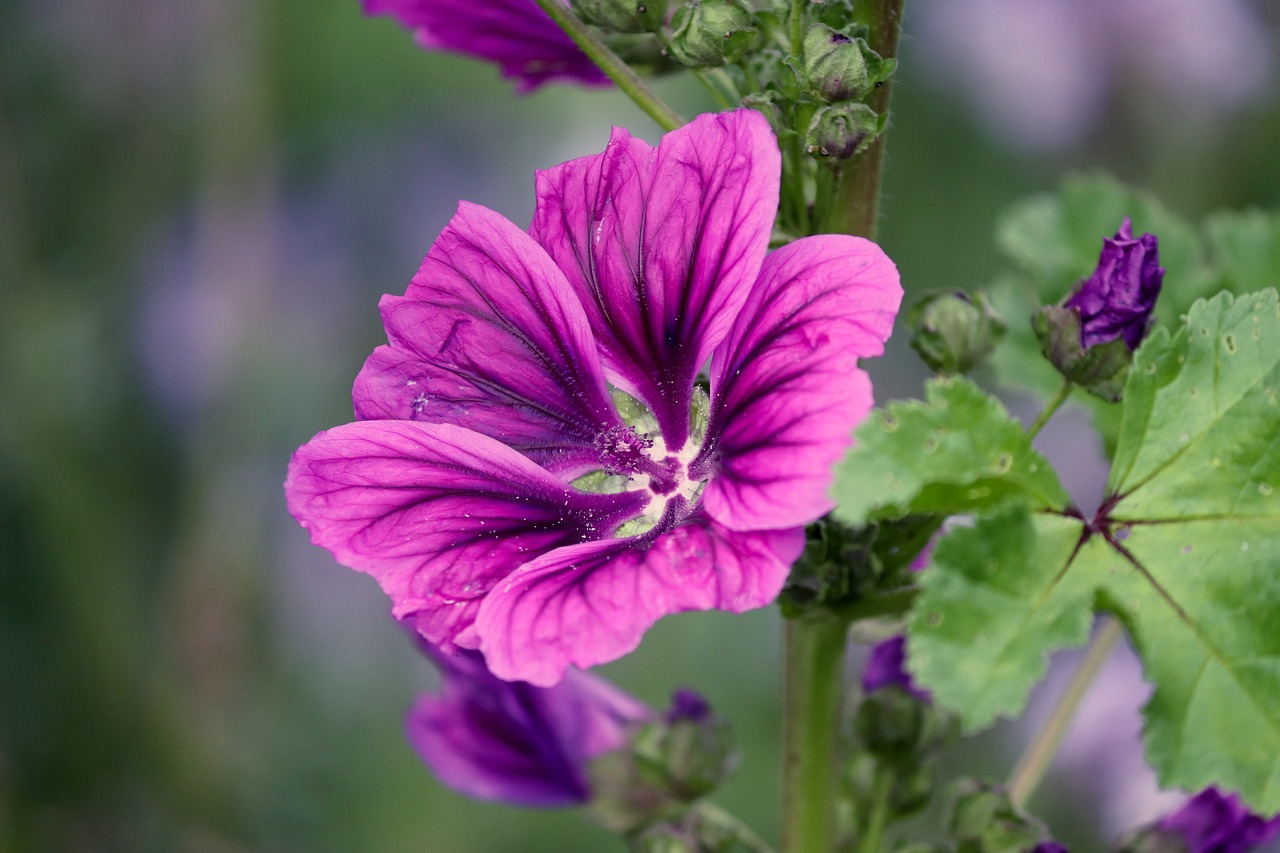
The Art of Planting Malva Flowers
In the vast tapestry of garden blooms, few flowers can rival the understated charm and versatility of the Malva, often affectionately referred to as “mallow.” As an aspiring green thumb, you may be keen to explore the captivating world of Malva, learning how to plant, nurture, and harness its various qualities. This comprehensive guide will take you on a journey through every aspect of Malva, from its introduction to its practical applications, ensuring you become a proficient Malva gardener.
Introduction to Malva
Malva, a proud member of the Malvaceae family, is a diverse genus encompassing around 25 species of both annual and perennial flowering plants. These beauties, known for their delightful five-petaled blossoms in shades of pink, purple, and white, are far more than just pretty faces. They offer an array of culinary and medicinal benefits, making them a treasured addition to any garden.
Varieties of Malva
Before you embark on your Malva gardening journey, it’s wise to acquaint yourself with the various species and cultivars. Some of the more popular varieties include M. sylvestris (common mallow), M. neglecta (dwarf mallow), and M. moschata (musk mallow). Each of these varieties comes with its unique characteristics and requirements.
Ideal Conditions for Planting Malva
While Malva is inherently hardy, creating an environment that caters to its needs is crucial for a flourishing garden. Here are some factors to consider:
Sunlight
Malva is a sun-loving plant. Ensure it basks in at least 6-8 hours of direct sunlight daily for robust growth and blooming.
Soil
Well-draining, loamy soil enriched with organic matter is the ideal foundation for Malva. It thrives in such fertile, nutrient-rich environments.
Watering
While Malva is relatively drought-tolerant, maintaining consistent soil moisture is vital, especially during the early stages of growth.
Temperature
The climate will dictate whether Malva grows as an annual or perennial in your garden. In cooler regions, it’s usually an annual, while in milder climates, it becomes a perennial.
Steps to Plant Malva
Now that you’re equipped with an understanding of the optimal conditions, let’s delve into the step-by-step process of planting Malva.
Choosing the Right Location
Select a sunny spot in your garden, on your balcony, or in your outdoor space that receives abundant sunlight, as this is crucial for Malva’s growth.
Preparing the Soil
Before planting, enhance the soil’s fertility and drainage by incorporating compost or well-rotted manure. This will create the perfect bed for your Malva.
Planting Malva Seeds or Seedlings
You can initiate your Malva garden either from seeds or by obtaining young seedlings from a nursery. Sow the seeds or transplant the seedlings into the prepared soil, ensuring they have adequate spacing for growth.
Caring for Your Malva Plants
Maintaining your Malva plants is delightfully low-maintenance. Water them consistently to keep the soil moist, especially during dry spells. Taller varieties may require staking to support their upward growth.
Troubleshooting Common Issues
Even in the most carefully nurtured garden, challenges can arise. Here’s how to address common Malva-related issues:
Pests and Diseases
Be vigilant for potential pests like aphids, as well as snails and slugs. Regular inspections and appropriate pest control measures can help protect your Malva plants.
Malva Plant Maintenance
To encourage bushier growth, periodically prune your Malva plants. Additionally, don’t forget to deadhead spent flowers to extend the blooming season, keeping your garden vibrant and lively.
Harvesting and Using Malva
The journey of planting Malva is most gratifying when you finally get to harvest and use this multifaceted plant.
When and How to Harvest Malva
Harvest Malva leaves and flowers when they’re young and tender, typically in the spring or early summer. You can snip them off with scissors or gently pinch them by hand.
Culinary Uses
Malva leaves are entirely edible and possess a mild, nutty flavor. They make fantastic additions to salads, soups, and as a cooked green, enhancing the flavor and nutritional value of your meals.
Medicinal Benefits
Beyond culinary uses, Malva has a rich history in traditional medicine. It’s valued for its soothing and anti-inflammatory properties. You can brew Malva leaves into a comforting herbal tea or utilize them topically for various applications.
Conclusion
In the realm of gardening, few plants are as rewarding as the Malva. It brings an exquisite touch of beauty and functionality to your garden, whether through its captivating blooms, its culinary contributions, or its therapeutic potential. As you embark on your journey of planting and nurturing Malva, remember that it’s not just a garden addition; it’s a companion that adds both aesthetic charm and practicality to your life.
Frequently Asked Questions (FAQs)
- Can Malva be successfully cultivated in containers on a balcony?
Absolutely! Malva can thrive in containers as long as they receive adequate sunlight and care. - What pests should I watch out for when growing Malva?
Keep an eye out for aphids, snails, and slugs, and take appropriate measures to protect your Malva plants. - How can I make Malva tea for its potential medicinal benefits?
To make Malva tea, simply steep fresh Malva leaves in hot water. The resulting brew can be soothing and therapeutic. - When is the best time to harvest Malva leaves for culinary use?
Harvest Malva leaves while they are young and tender, usually during the spring or early summer. - Are there specific Malva varieties known for unique qualities or characteristics?
Yes, some varieties are favored for their ornamental value, while others are prized for culinary or medicinal applications. Explore the diverse world of Malva to find the perfect fit for your garden.